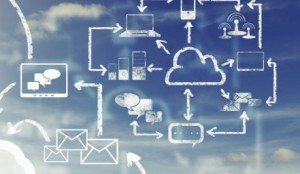Capstone: On-Line or Face-to-Face?
A Reflection on online pedagogy as it is similar to and different from face-to-face instruction.
As we close out our studies on best practices and becoming an online teacher, it only seems fitting to examine both the online learning environment and the tradition classroom. Both learning environments have their advantages and disadvantages, similarities and differences.
The two learning environments are very similar , they are both classrooms. Traditionally you deliver subject content , develop a community, engage the participants, provide feedback and assess student learning. Assessments are varied to accommodate diversified learners, feedback is timely and provides encouragement to improve student progress. This in-turn fuels inquiry ,engaging young minds to learn more. The same learning models exist as well, student-teacher, student-student and student-content interactivity all occur and are essential for a successful learning experience, whether online or in the face-to-face classroom.
Their differences are more apparent. Online is asynchronous allowing for flexibility and 24/7 access to resources. Online you can think before you “speak” , which leads to deeper thinking and a more synthesized response. A student -centered environment where the learner can go at their own pace and exist on a level playing field. However, the virtual classroom is often considered distant. Many students develop a sense of isolation and may become disconnected from the learning experience. A synchronous class room is real time with everyone together in a group. A sense of community is inherent, all students are in class and a member of the class; sharing information, space and time, where interaction is immediate and spontaneous.
Online teaching requires strong written communication skills, organization, hours of pre-planning and the technical ability to master the LMS. The instructor is now a mentor and coach, providing guidance, support and encouragement to an unseen audience. Online learning requires a self-disciplined student with a high level of time management skills, self -motivation and organization. Students now take on the responsibility of becoming a life-long learner.
Traditional face-to-face teaching has the advantage of visual contact, a somewhat teacher-centered approach using body language and tone of voice to facilitate communication. When moving to an online model , teachers must learn to master written communication skills and students must learn to read with greater attention to detail.
The online experience encourages the teacher to collaborate with students in the creation of a more dynamic learning experience. Access through technology allows for a more personalized teacher-student relationship. Discussion forums, written feedback and private message threads allow for personalized instruction and in-depth reflection.
Personalized feedback from the instructor, builds mutual respect and provides students with encouragement
and motivation to excel at future assignments.
Typical feedback from my practicum instructor is illustrated in the artifact to the right.
Student-student interaction demonstrates genuine collaboration, trust and content appreciation, illustrated below.
Detailed , specific instruction is essential in the online environment. The level of detail of written instruction is illustrated below.
A hands-on element and real-world connection has always been an important component of my teaching philosophy. At first glance this would appear difficult in an online classroom. Recent experience in my practicum course has provided me with new insights into how even the most difficult projects can be accomplished in the virtual classroom. Extensive use and examples of online collaborative group projects were plentiful in my practicum course, Entrepreneurship. My mentor’s curriculum does a great job in bringing real-work examples into the classroom. Creating a personal ledger in MS excel for a week’s income and expenses, developing, generating and executing a sales call to family and friends as potential customers, negotiating and agreeing on a price for a sales item with a classmate, creating a customer survey , giving it to potential customers, collecting and analyzing the data; are all authentic situations every entrepreneur must face when starting a business. These projects engage the learner in real-world examples, challenge students to think beyond the general content and apply that knowledge to future real-world experiences. These students are young entrepreneurs with the 21-century skills they need to be successful!



